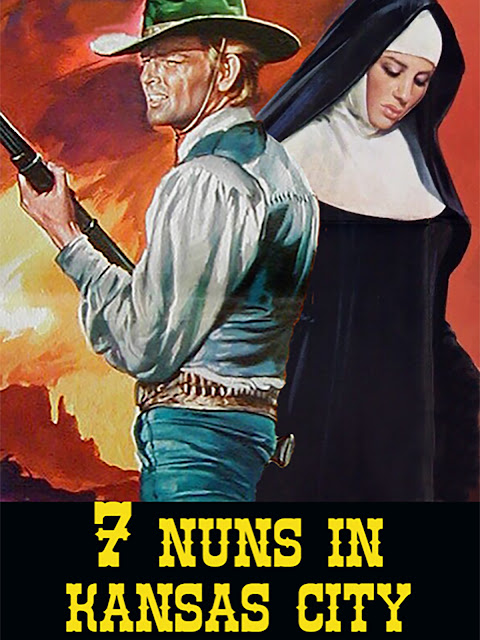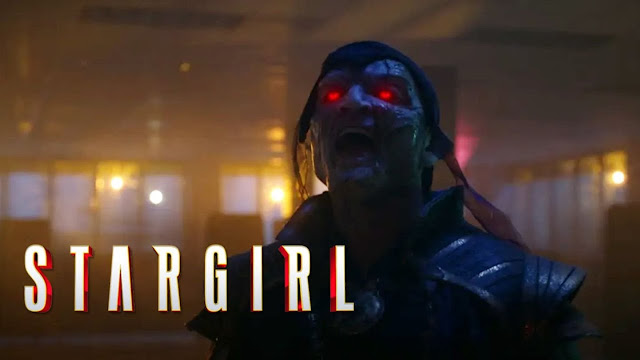PHENOMENALITY: *naturalistic*
MYTHICITY: *poor*
FRYEAN MYTHOS: *drama*
CAMPBELLIAN FUNCTION: *sociological*
I decided to watch the three ANGEL films of the eighties mostly to see to what extent they fulfill my designated trope of "bizarre crimefighting," given that in all three films the protagonist functions with two identities; one respectable, the other out for vengeance.
With the first film-- which hit big box-office with its tagline "High school honor student by day, Hollywood hooker by night"-- the young prostitute is not a crimefighter as such. High schooler Molly Stewart (Donna Wilkes) pays for her private school education by turning tricks under the name "Angel" on the Hollywood Boulevard. Both her father and mother deserted Molly and so she became a pro to avoid being sent into the foster system, but she's picked up a "street family" consisting in part of former stuntman Kit Carson (Rory Calhoun) and lesbian apartment manager Solly (Susan Tyrrell). A little ways into the film, a protective cop named Andrews finds out her secret but merely tries to talk her into quitting the life.
So in this film Molly's double identity only becomes a sort of "crimefighting" after the fact. when a necrophiliac serial killer begins picking off prostitutes on the Boulevard, including a hooker friend of Molly's. Molly arms herself with a handgun but when she and her friends encounter the killer, it's actually Kit who does the shooting. So in the first film, Angel's qualifications as a vigilante avenger are pretty limited.
AVENGING ANGEL takes place a few years later. With some unspecified help from her new father-figure Andrews, Molly (now played by Betsy Russell) is taking law courses, though her status is vague. (One scene shows her actually litigating a case in court, though perhaps she was meant to be a paralegal.) Yet for whatever reason she's also become far more proficient with firearms.
Andrews is slain by gangsters seeking to acquire all of the properties on the Boulevard (sort of a sleazy update of the Western trope of the Evil Banker foreclosing on Virtuous Ranchers). Molly decides to revive her Angel persona in order to go undercover and make contacts, calling upon both Kit and Solly in the process. When the mobsters try to rub out a witness to their crimes, Kit and Angel (her bare face hanging out and all) drive them away with blazing rifle-fire. This leads to more encounters between the virtuous vigilantes and the evil exploiters, the highlight of which is the climax. In this gleefully over-the-top sequence, the head mobster and his gunsels kidnap an infant in the care of Solly, in order to regain custody of the crime boss's son-- who is, unfortunately, dead. This leads to a macabre scene in which the heroes prop the body of the mobster's son in a wheelchair to simulate life. It doesn't work, but it does lead an entertaining game of "toss the helpless infant around." As in the first film, Calhoun and Tyrrell provide ample support to Russell's heroine, who seems much gutsier and more forthright than was the Wilkes incarnation.

Three years later for the filmmakers (but seven or more years later in the movie-universe), Molly (now played by Mitzi Kapture) has given up the bar for the life of a freelance photographer. There's no real semblance of a "street family" for Molly this time, though she does meet one or two old acquaintances. Though it's true, as some reviewers said, that the two films directed by Robert Vincent O'Neil are glossied-up versions of Boulevard existence, new writer-director Tom DeSimone provides an even more colorless mainstream effort, despite working in a white slavery ring tied to a porn film operation.
The initiating incident for Angel's second crusade is a little more interesting this time, though DeSimone could've done much better with the setup. Molly accidentally runs into the mother who deserted her years ago, and it just so happens the mother's involved in the aforementioned enterprise. Molly's Mom lasts only long enough to inform Molly that she's got a sister she never knew about, who's gotten roped into the porn-movie operation, and then Molly's Mom is knocked off for Reasons. Molly revives her Angel persona once more as a means of getting access to the operation, being interviewed by Queen Bee Nadine (Maud Adams). The heroine also recruits a couple of very forgettable male allies for her sting. Molly reveals the truth to her sister Michelle, and despite initial resistance, Michelle ends up finding out the awful truth before Molly comes to the rescue.
Though DeSimone had made some choice grindhouse movies with HELL NIGHT and REFORM SCHOOL GIRLS, everything in FINAL is very pedestrian. Whereas O'Neil never met a blood-squib he didn't like, there's very little gun-action here. Kapture is pretty but underwhelming in these days before her turn on the cable series SILK STALKINGS. There are only two decent scenes in the movie: Molly hoaxing a pimp into baring it all for prospective sex, only to kick him into the streets naked, and Molly impaling a villain with a cargo-hook. Despite having some talented performers, particularly Adams, his script gives them nearly nothing to do. There was a cable-made sequel in 1993 with yet another actress playing Molly, and going on my memories, I think it was probably on the same bland level as the DeSimone effort.
Though I'm not a fan of any of the movies in the series, researching their provenance did lead me to this excellent DVD review of the first three films, which also provided strong insight into the genesis of eighties "Striploitation" movies.

























